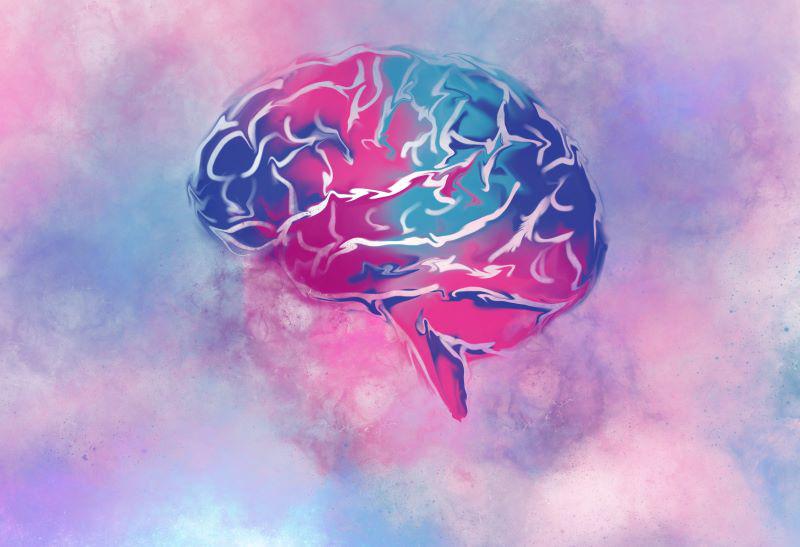Get Healthy!

- Dennis Thompson
- Posted December 5, 2022
Vicious Cycle: Epilepsy Seizures Could Encourage More Seizures
Seizures tend to get progressively worse over time in people with epilepsy, and a new study in mice suggests why that might be the case.
Seizures appear to prompt the brains of mice to produce more myelin, the insulating layer around nerve cells, researchers from Stanford University found.
This essentially rewires the brain, creating a vicious cycle in which more seizures cause more abnormal myelin formation, which then causes more seizures, researchers reported Saturday at a meeting of the American Epilepsy Society, in Nashville, Tenn.
"What we think is happening is that seizures are changing the structure of myelin, at least in some regions of the seizure network in the brain, and that those changes in myelination are then contributing to the subsequent worsening of the disease," said lead researcher Dr. Juliet Knowles, an assistant professor of neurology at Stanford.
Myelin serves a crucial role in the brain. By insulating the neurons, the substance increases the rate and efficiency at which electrical impulses can be passed between nerve cells.
It had long been thought that myelin formed in the brain early in life and then didn't change much, but newer research has shown that myelin's structure is more dynamic, Knowles said. Myelin in the brain will be altered by brain activity.
"We understand now that neuronal activity changes myelin structure, and that the changes in myelin structure in turn shapes how the brain functions," she said.
Given that, Knowles set out to study whether seizures would constitute a kind of nerve cell activity that would alter the formation of myelin.
Well-known degenerative diseases such as multiple sclerosis occur because something causes the myelin sheath to be ripped away from nerve cells.
But the opposite appears to happen when epileptics undergo absence seizures, which are a type of seizure that causes a lapse in consciousness, researchers said.
Lab mice engineered to undergo these sort of seizures wound up with more myelinated nerve cells and thicker myelin sheathes, particularly in brain regions where the seizures occurred, researchers said.
Myelin development is a normal process, "but for some reason, seizures in this particular mouse model hijacks that normal process and makes it aberrant," said Dr. Dileep Nair, section head of adult epilepsy at the Cleveland Clinic Epilepsy Center. "It promotes myelin formation that allows seizure activity to occur more easily."
Researchers also found that this cycle could be interrupted in a couple of ways.
Mice given antiseizure medication did not form abnormal myelin -- an indication that those changes were indeed caused by seizures.
"We don't see increased myelin plasticity before the seizures start," Knowles said. "It is only seen after the seizures start."
And when researchers blocked the myelin changes -- either through genetic tweaks or through drugs known to inhibit myelin production -- the number of seizures in mice reduced over time.
This is one of the first studies to link myelin structure to epileptic seizures, said Chris Dulla, an associate professor of neuroscience at Tufts University School of Medicine in Boston.
"It suggests is that there are specific things you can interrupt or modulate or treat with drugs that could stop seizures from starting or from getting worse over time," Dulla said. "One exciting idea is that you could borrow approaches from other neurological diseases that we know involve malfunctions in myelination, and you could try to apply them to treating epilepsy."
These changes in myelin also might explain other problems that occur in people with epilepsy, such as loss of memory or difficulty thinking, Nair said.
There's more work to be done in mice to better understand the connections between seizures and myelin development, Knowles said.
Researchers need to track how myelin structure changes over time, whether the response to seizures is overriding heathy myelin formation, and whether myelin changes in just one part or throughout the brain following a seizure, she said.
"We also don't know yet if this exact process occurs in humans, so we are initiating studies where we're using tools like MRI and EEG to understand whether myelin structure and function similarly changes in response to seizures in humans," Knowles said.
Findings presented at medical meetings are considered preliminary until published in a peer-reviewed journal.
More information
The Mayo Clinic has more about epilepsy.
SOURCES: Juliet Knowles, MD, PhD, assistant professor, neurology, Stanford University, Palo Alto, Calif.; Dileep Nair, MD, section head, adult epilepsy, Cleveland Clinic Epilepsy Center, Ohio; Chris Dulla, PhD, associate professor, neuroscience Tufts University School of Medicine, Boston; presentation, American Epilepsy Society meeting, Dec. 3, 2022, Nashville, Tenn.







